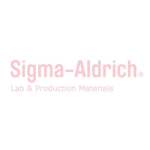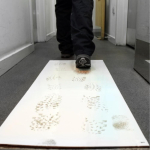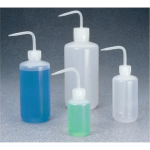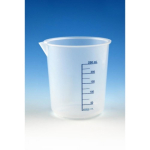Analysis Note
Absorbance:The purified enzyme from beef heart has an absorbance of 14.9 (10 mg/ml, 280 nm).
Application
Reduction of ?-ketoacids to ?-hydroxycarboxylic acids, or reverse reaction.
General description
L-lactate:NAD+ oxidoreductase.L-lactate dehydrogenase catalyzes the reversible reduction of pyruvate to L-lactate.
Other Notes
For life science research only. Not for use in diagnostic procedures.
Physical form
Suspension in 3.2 M ammonium sulfate solution, pH approximately 7
Preparation Note
Activator: 2-amino-2-methyl-1-propanol, diethanolamine, fluoride and heparin (oxidation reaction). Sodium sulfite (Na2SO3) will protect the enzyme from the effects of thiol-attacking reagents. Mercaptans can reverse the inhibitory effects of thiol-attacking reagents.
Sequence
LDH is a tetramer (MW = approx. 140,000 D, rabbit muscle or pig heart LDH). In mammals, there are two types of LDH subunits, M and H, with similar molecular weight (subunit MW ≈ 36,500 D) but differing amino acid composition.Therefore, 5 electrophoretically distinguishable LDH isoenzymes, LDH-1 through LDH-5, of differing subunit composition, are found in mammals.The molecular weight of all LDH isoenzymes is approximately the same.– LDH-1 (H4), LDH-2 (H3M): predominant components of heart LDH– LDH-3 (H2M2): principal component of LDH from lymphatic tissue– LDH-4 (HM3), LDH-5 (M4): predominate in skeletal muscle or liver LDHNote: The M subunit of LDH used to be designated the A subunit; the H subunit was the B subunit. Under the old designation, LDH-1 isoenzyme was LDH-B4.
Specificity
L()-Lactate dehydrogenase (LDH) is specific for L()-lactate (relative rate = 100). It does not react with D(-)-lactate.LDH will also slowly oxidize glyoxylate (oxoacetate), glycerate and 3-halogen derivatives of L-lactate (rate with each, ≤ 1); 3-phosphoglycerate does not react.LDH will reduce pyruvate (2-oxopropanate; relative rate = 100) and other 2-oxoacids (e.g., 2-oxobutyrate), with rates decreasing rapidly with increasing chain length of the acid. Heart LDH reacts with 2-oxobutyrate at a greater rate than does skeletal muscle LDH.LDH will also oxidize 2,4-diketoacids (relative rate = 10). The enzyme is realtively specific for NAD(H) (relative rate = 100); NADP(H) is utilized much less efficiently (relative rate ﹤ 1). Representative Kms for (hog) skeletal muscle LDH (pH 7.5) are lactate, 8.3 mM; pyruvate, 0.12 mM; NAD, 0.10 mM; NADH, 0.012 mM.Representative Kms for (pig) heart LDH (pH 7.5) are lactate, 3.3 mM; pyruvate, 0.15 mM; NAD, 0.07 mM;NADH, 0.011 mM. In general, the concentration of pyruvate (reduction reaction) or of L-lactate (oxidation reaction) necessary to obtain a maximal rate with LDH is lower for preparations from heart tissue than for the preparations from skeletal muscle.
Unit Definition
One unit (U) lactate dehydrogenase will reduce 1 mol of pyruvate to L-lactate in 1 minute at +25 °C and pH 7.0.Note:










